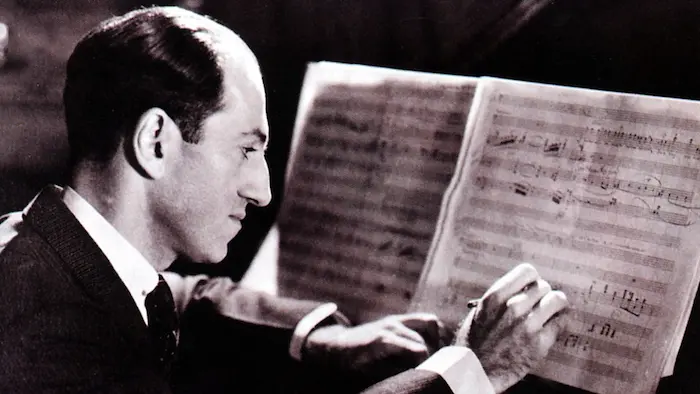Jazz and classical music are two distinct genres that have captivated audiences for centuries. Jazz, with its improvisational flair, syncopated rhythms, and bluesy tones, originated in the early 20th century. Classical music, with its structured compositions and rich orchestral textures, dates back to the medieval period. Despite their differences, these two genres have often intersected, creating a unique and dynamic blend known as jazz classical music. This fusion has produced some of the most innovative and compelling music in history.
I. Origins of Jazz and Classical Music
1. Jazz: A Brief History
Jazz originated in the African-American communities of New Orleans in the late 19th and early 20th centuries. It evolved from blues, ragtime, and other musical styles. Early jazz musicians like Louis Armstrong, Duke Ellington, and Jelly Roll Morton pioneered the genre, bringing it to national prominence. Jazz is characterized by swing and blue notes, call and response vocals, polyrhythms, and improvisation.
2. Classical Music: A Historical Overview
Classical music has its roots in the traditions of Western art music. It spans several periods: Medieval, Renaissance, Baroque, Classical, Romantic, and Contemporary. Key figures include Johann Sebastian Bach, Ludwig van Beethoven, Wolfgang Amadeus Mozart, and Igor Stravinsky. Classical music is known for its complex compositions, orchestral arrangements, and formal structures.
II. Fusion of Jazz and Classical Music
1. Early Experiments
The fusion of jazz and classical music began in the early 20th century. Composers and musicians from both genres experimented with combining elements of each. George Gershwin’s “Rhapsody in Blue” (1924) is a notable example, blending classical composition techniques with jazz rhythms and harmonies. This piece is considered one of the earliest and most successful jazz classical works.
2. Influential Composers and Musicians
Several composers and musicians have made significant contributions to jazz classical music:
George Gershwin: Known for “Rhapsody in Blue” and “An American in Paris,” Gershwin’s work is a cornerstone of the genre.
Duke Ellington: A jazz legend, Ellington composed pieces like “Black, Brown, and Beige” that incorporated classical elements.
Gunther Schuller: A composer and French horn player, Schuller coined the term “Third Stream” to describe the fusion of jazz and classical music.
Leonard Bernstein: His works, including “West Side Story,” integrate jazz influences into classical compositions.
III. Characteristics of Jazz Classical Music
1. Improvisation and Structure
One of the defining features of jazz classical music is the balance between improvisation and structured composition. Classical music typically relies on written scores, while jazz emphasizes spontaneous creation. Jazz classical pieces often incorporate improvisational sections within a composed framework, allowing musicians to express creativity while maintaining the integrity of the composition.
2. Rhythmic Complexity
Jazz classical music often features complex rhythms and syncopation, a hallmark of jazz. These elements are integrated into classical forms, creating a dynamic and engaging musical experience. Composers like Stravinsky and Bernstein have used jazz rhythms to infuse energy and excitement into their works.
3. Harmonic Innovation
The harmonic language of jazz classical music is rich and diverse. Jazz’s use of extended chords, blue notes, and unconventional harmonic progressions adds depth and color to classical compositions. This harmonic innovation can be heard in works by composers like Gershwin and Ellington.
IV. Key Works and Performances
1. “Rhapsody in Blue” by George Gershwin
“Rhapsody in Blue” is perhaps the most famous example of jazz classical music. Composed in 1924, it seamlessly blends jazz rhythms and harmonies with classical form. The piece’s opening clarinet glissando is iconic, setting the stage for a work that is both innovative and timeless.
2. “Black, Brown, and Beige” by Duke Ellington
Ellington’s “Black, Brown, and Beige” is a jazz symphony that tells the story of African-American history. Premiered in 1943, it combines jazz elements with symphonic structure, showcasing Ellington’s genius as both a composer and bandleader.
3. “Prelude, Fugue, and Riffs” by Leonard Bernstein
Composed in 1949, Bernstein’s “Prelude, Fugue, and Riffs” is a lively and intricate work for solo clarinet and jazz ensemble. It exemplifies the fusion of jazz and classical elements, with its playful rhythms and sophisticated counterpoint.
V. Modern Interpretations and Developments
1. Contemporary Composers and Performers
Today, many composers and performers continue to explore the fusion of jazz and classical music. Artists like Wynton Marsalis, Terence Blanchard, and Maria Schneider have created works that push the boundaries of the genre. Marsalis, a renowned trumpeter and composer, has written pieces like “All Rise,” which blend jazz, blues, and classical influences.
2. Cross-Genre Collaborations
Collaborations between jazz and classical musicians have become more common, leading to exciting new projects and performances. Orchestras frequently commission jazz composers, and jazz ensembles often perform with classical musicians. These collaborations enrich both genres and introduce new audiences to the fusion of jazz and classical music.
VI. Impact and Legacy
1. Influence on Music Education
The fusion of jazz and classical music has had a significant impact on music education. Conservatories and music schools now offer programs that encourage students to explore both genres. This interdisciplinary approach fosters a deeper understanding of music and promotes creative expression.
2. Cultural Significance
Jazz classical music reflects the cultural diversity and innovation of the 20th and 21st centuries. It celebrates the blending of traditions and the breaking down of musical barriers. The genre’s ability to evolve and adapt has ensured its relevance and enduring appeal.
See Also: Exploring Semi-Classical Music: A Fusion of Tradition and Innovation
VII. Conclusion
Jazz classical music is a vibrant and dynamic genre that brings together the best of both worlds. Its rich history, diverse influences, and innovative spirit continue to captivate audiences and inspire musicians. As composers and performers push the boundaries of jazz and classical fusion, the genre will undoubtedly continue to thrive and evolve, offering new and exciting musical experiences for generations to come.

